4000 year-old technology solves injury problem,
increases output 20%, and eliminates rejects
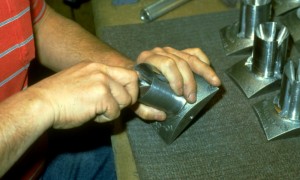 |
| Before — Traditional workbench, no fixture |
The work had previously been done on a standard workbench. The task was to remove burrs and sharp edges on a part destined for a mainframe computer.
The problems included slow and tedious work, unacceptable levels of rework, and high rates of hand and arm disorders. The work was unpopular, so a number of people rotated through the job to spread the burden equally.
The first need was to develop a fixture (note in the photo above the left hand being used as a fixture). The challenge was that the fixture at times had to rotate continuously, then at other times, index back and forth. .
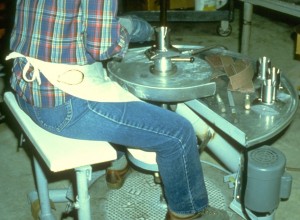 |
| After (initial) — Potters Wheel, fixture mounted on plate |
Brainstorming led to the realization that a traditional potter’s wheel had the necessary framework for a fixture that could be manipulated with the feet or rotated using the electric motor. An off-the-shelf unit provided a good start, but needed modifications, such as the inadequate stool.
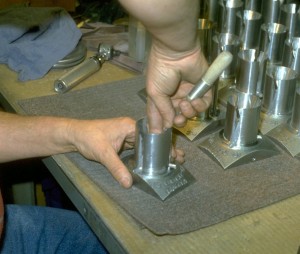 |
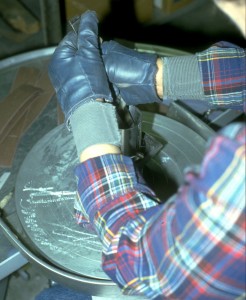 |
| Before — Multiple shortcomings including non-functional handle on generic tool | After — Two-handed specialized tool |
Fixturing the product led to additional immediate improvements. In particular, it freed up both hands to do the work and enabled development of specialized, two-handed tools.
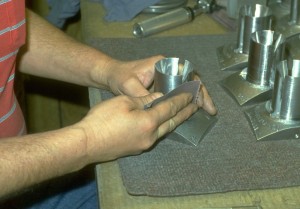 |
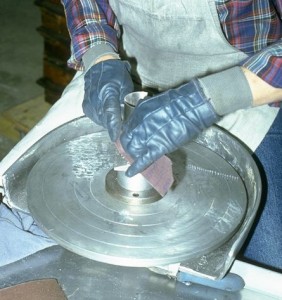 |
| Before — Hand sanding: repetitive, slow production | After — Wheel spins: hands still, fast production |
An additional problem in the original task was sanding the outside surface of the part (above left). The work required repetitive motions for both hands — the left to rotate the part and the right to do the sanding. Consequently, it was was time-consuming and a source of rework.
Once the fixture was in use and spinning (above right), all that was necessary was to hold the sandpaper lightly. The work was done quickly and without defects.
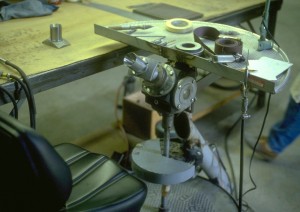 |
| After (continuous improvement) — Workstation designed around the fixture |
After a time, multiple improvements were made: the plate was removed, the fixture angled for better access, and better seating installed.*
The next action was to add a rack for tools and materials, then eliminate the surface that was used haphazardly for storage. An unintended benefit was an increase in floor space from eliminating the old large workbenches (seen in upper left portion of photo)
 |
| 20% increase in productivity (and zero defects, zero injuries) |
Results — Production increased 20% and both rework and hand disorders were eliminated.
*Creativity — The plant maintenance man was a Harley-Davidson and auto repair enthusiast and his creativity became apparent:
- He replaced the original potter’s stool with a car seat, equipped with an electric motor and push buttons for height adjustment.
- He added a Harley-Davidson brake, complete with foot pedal that stood out conspicuously to one side — large and chrome-plated (the potters had no need to stop the plate from spinning, but these employees did).
